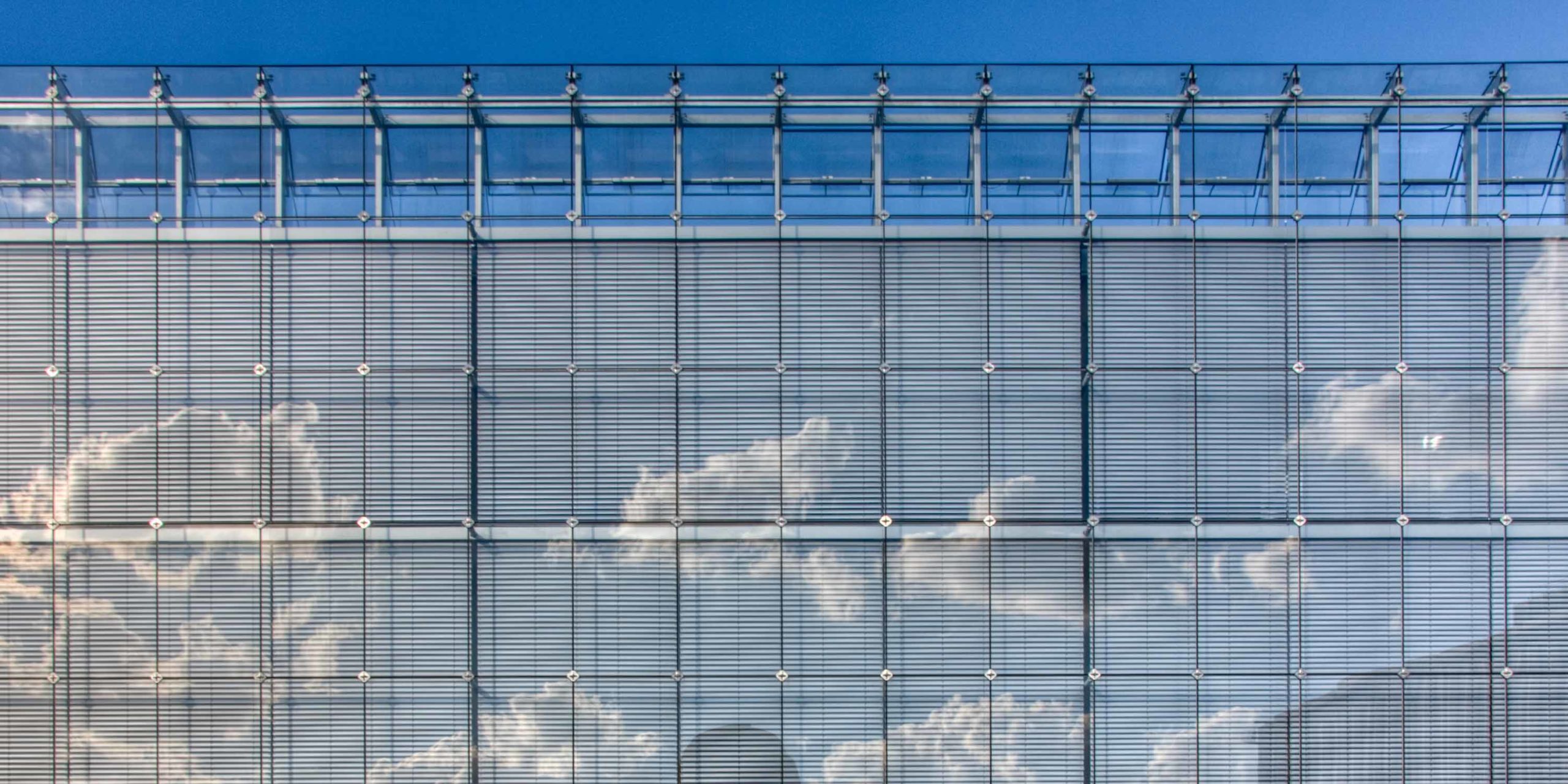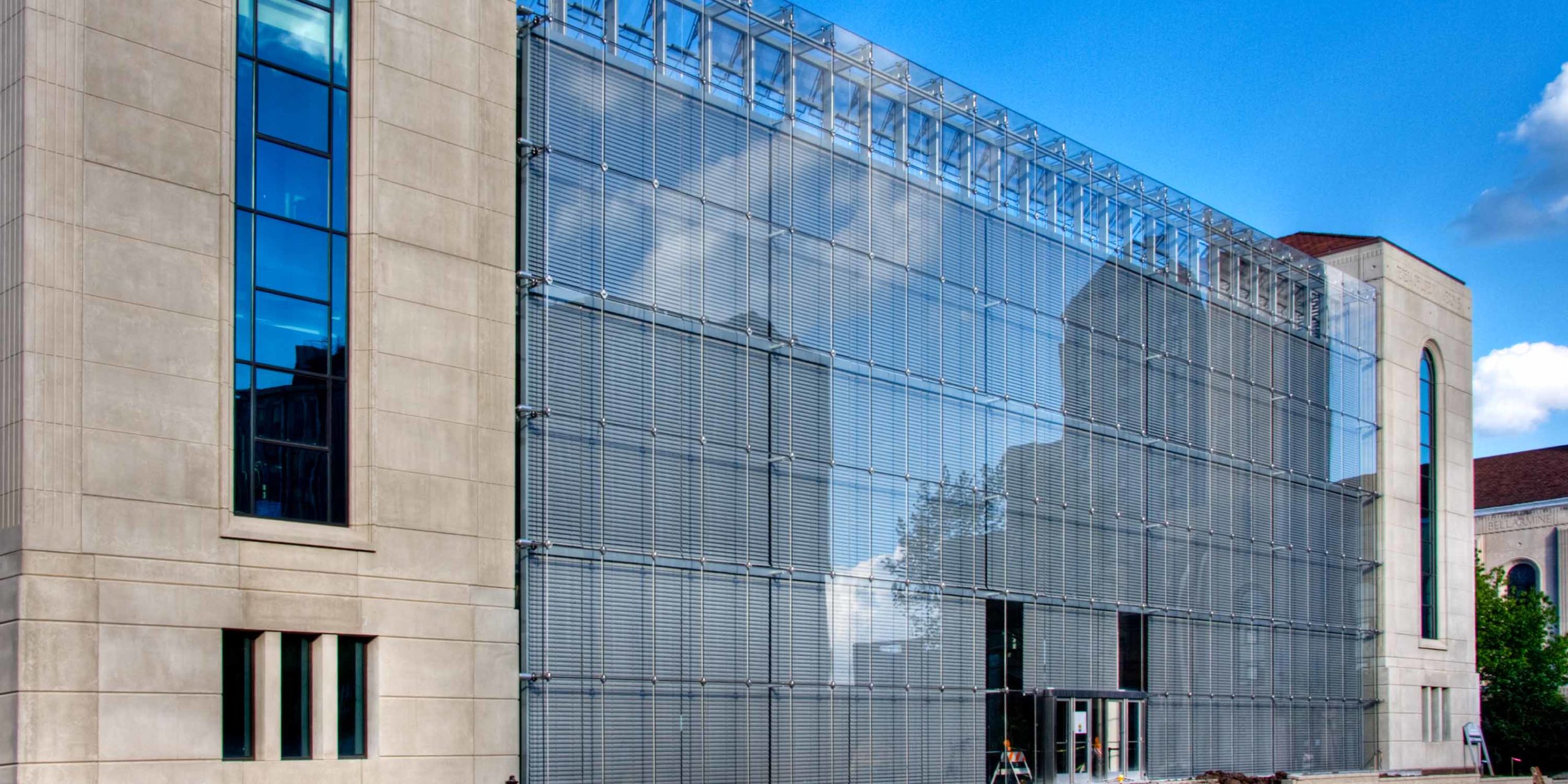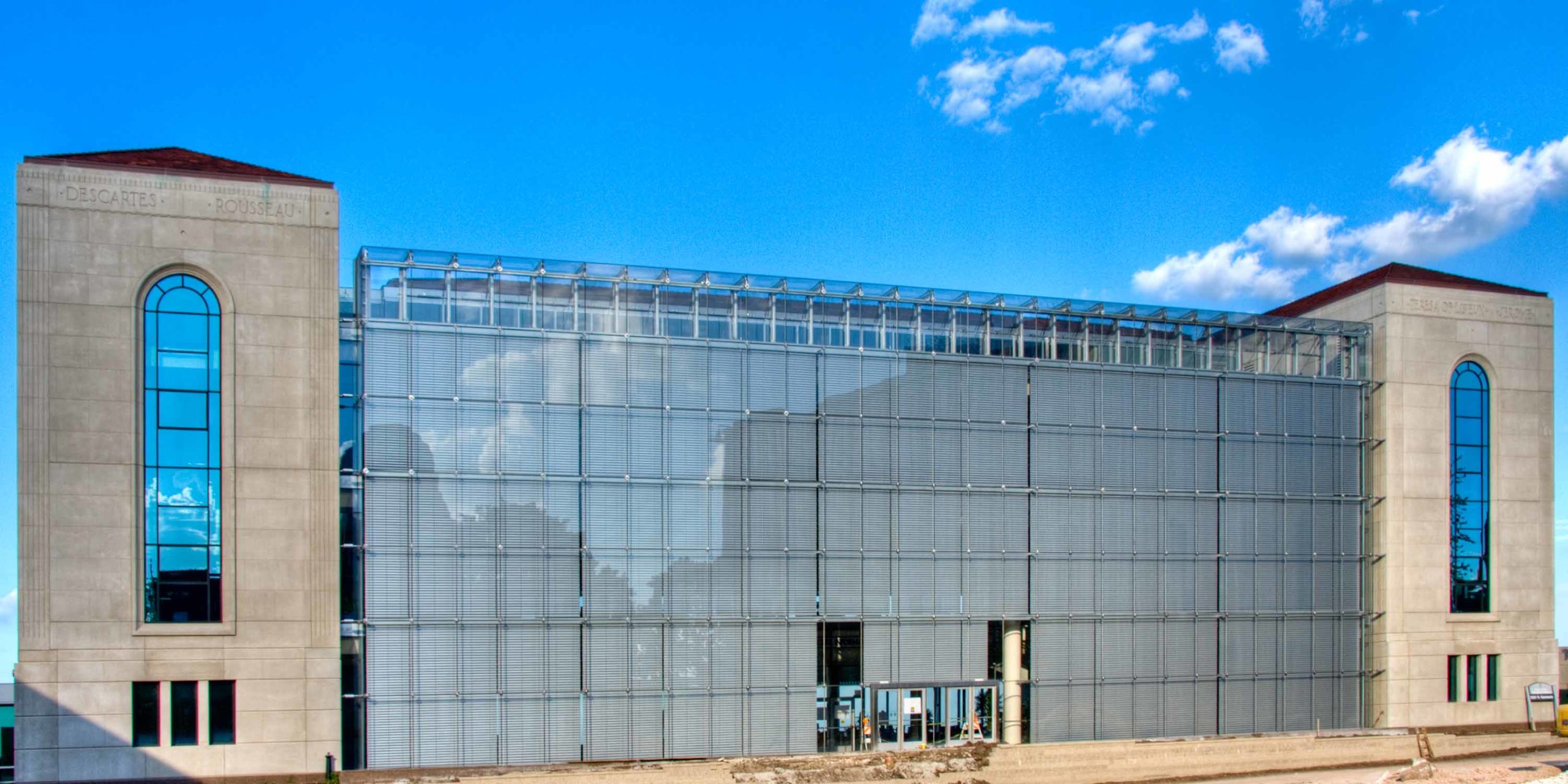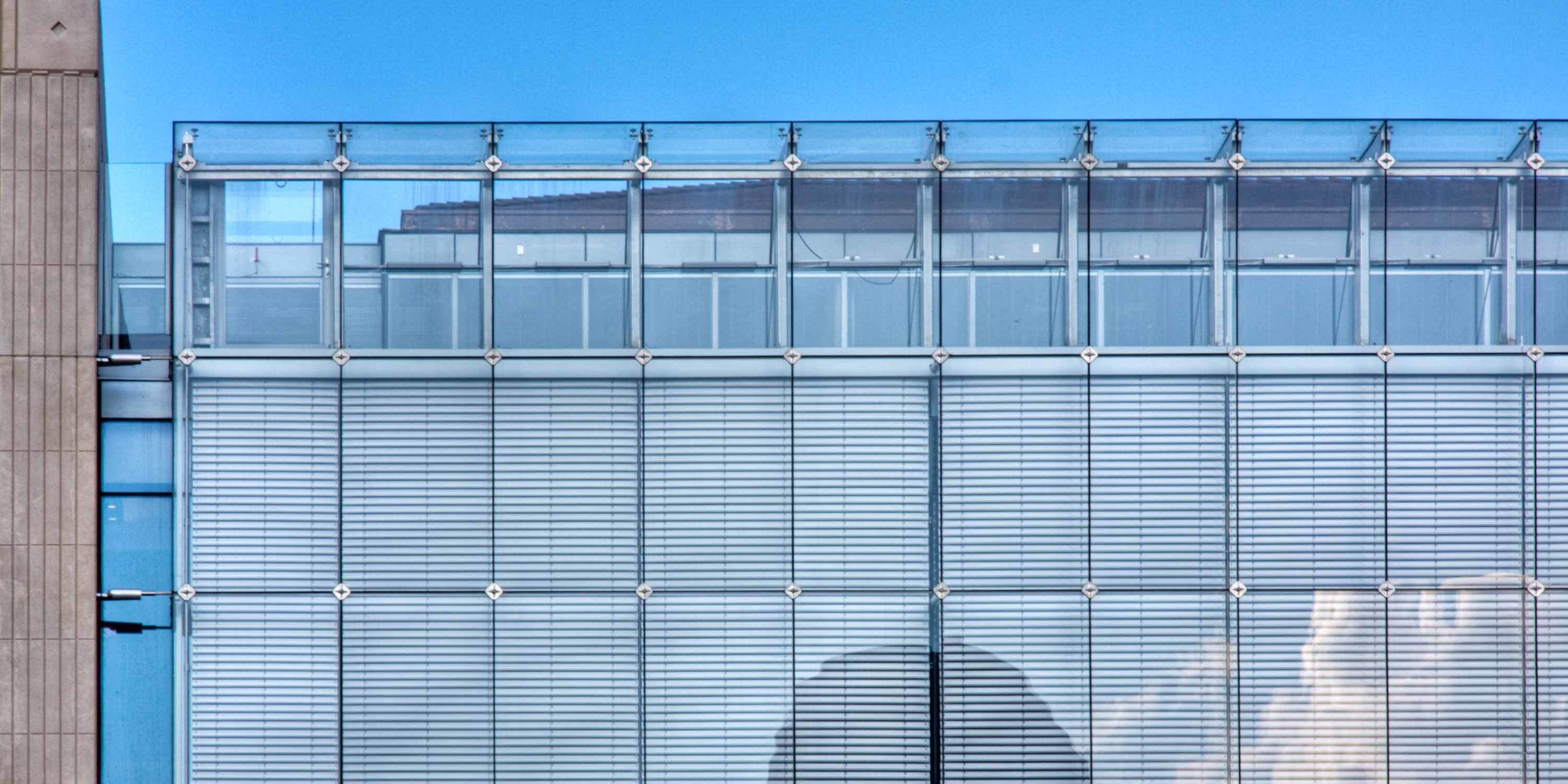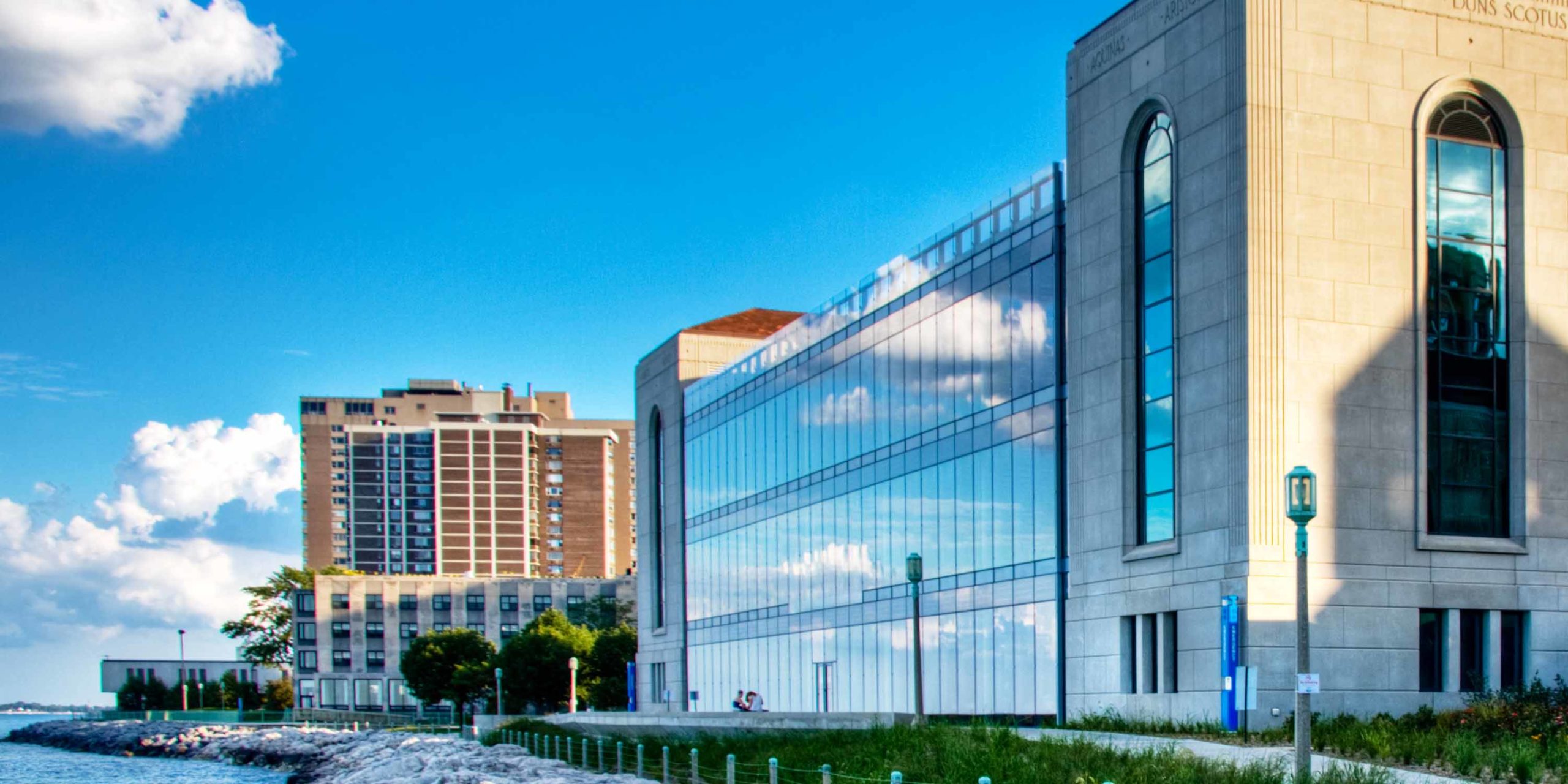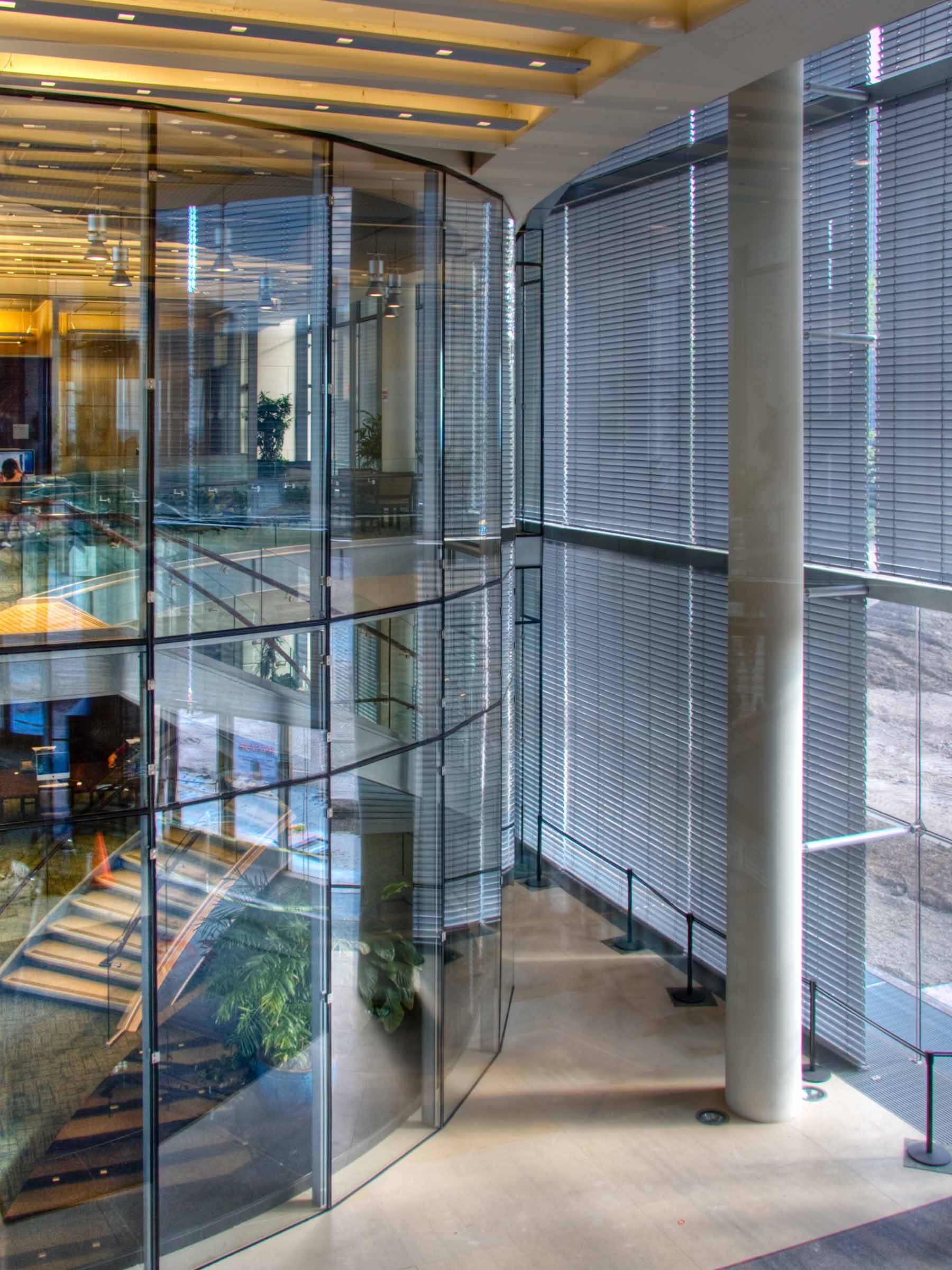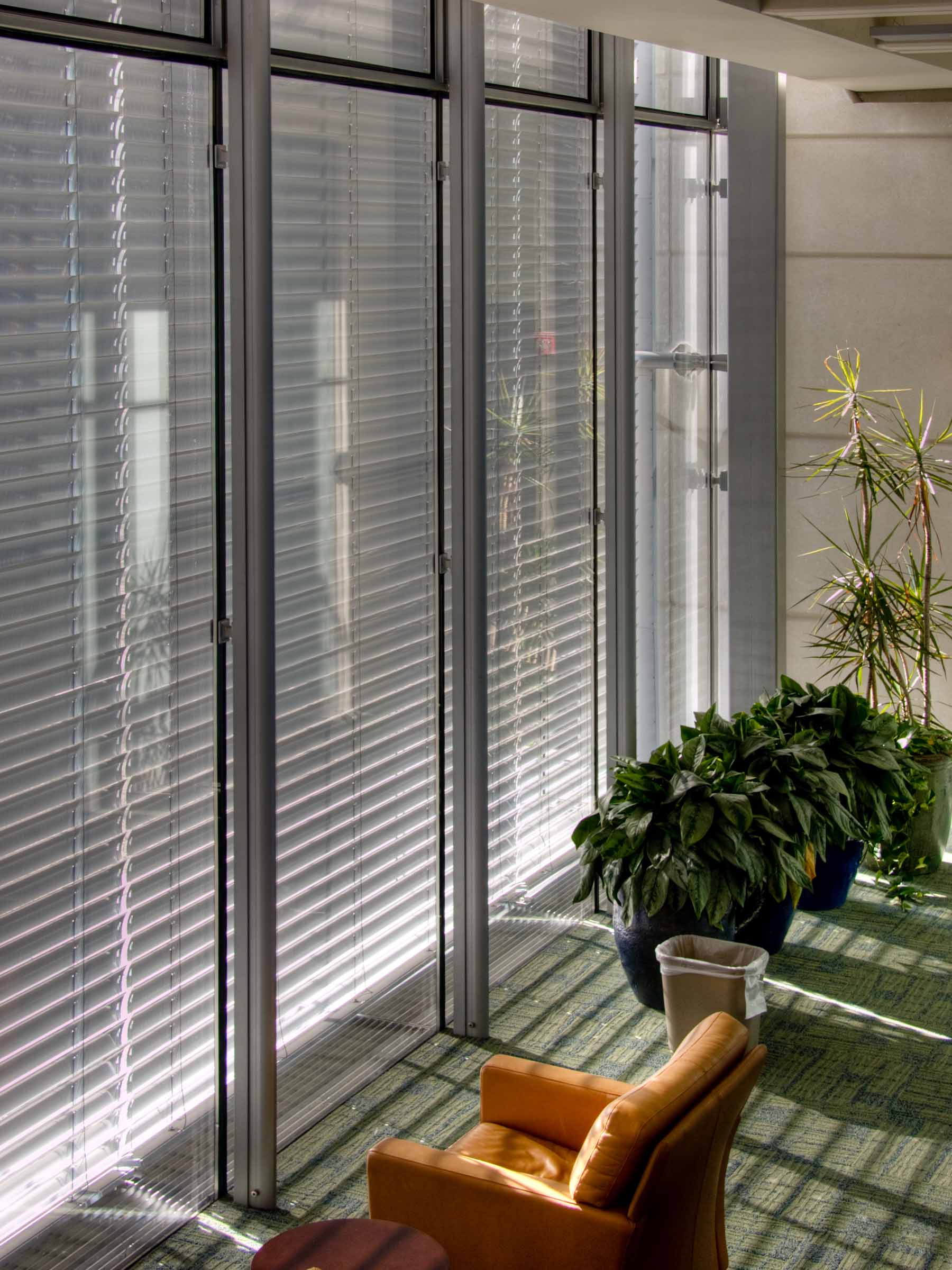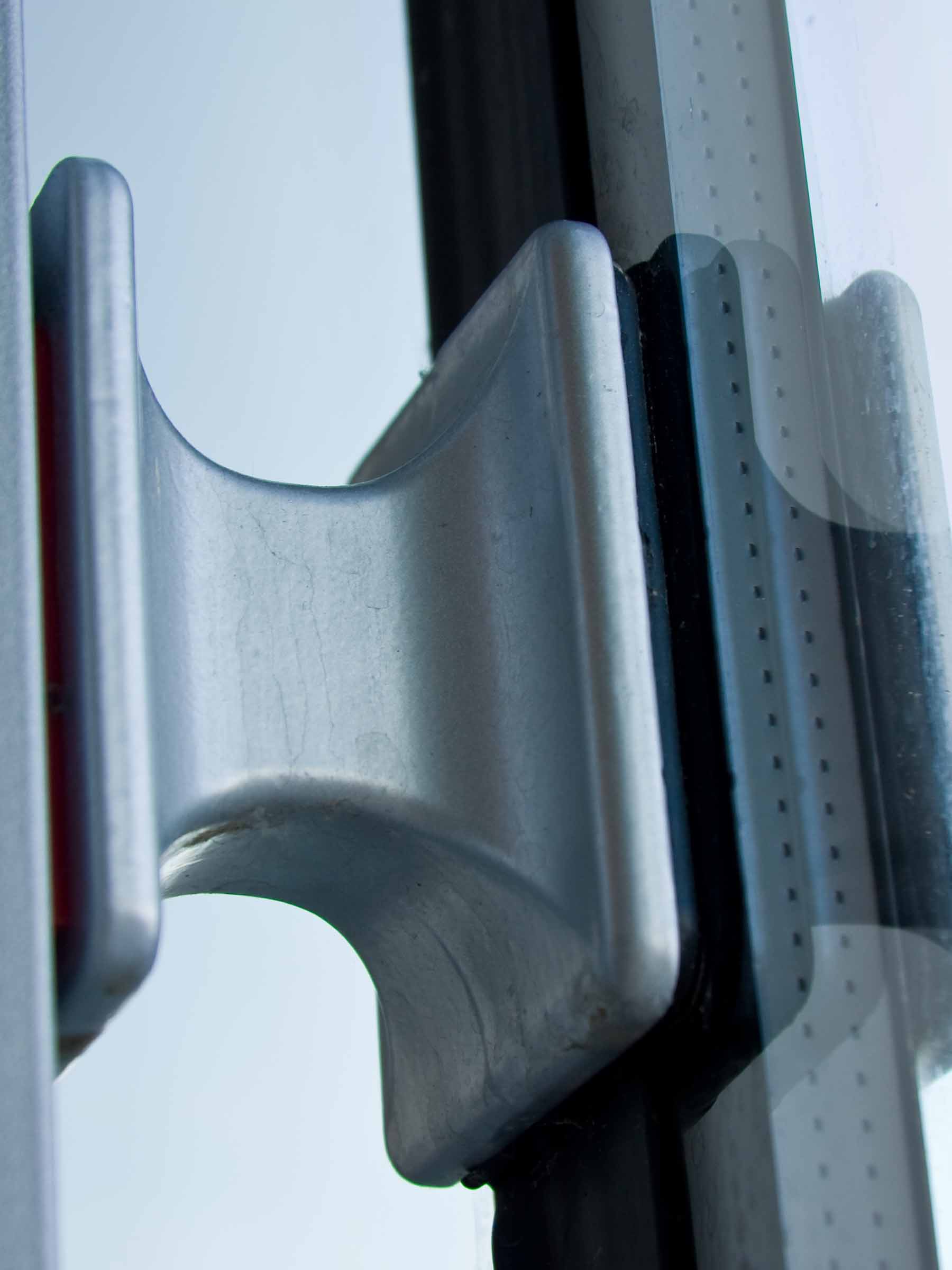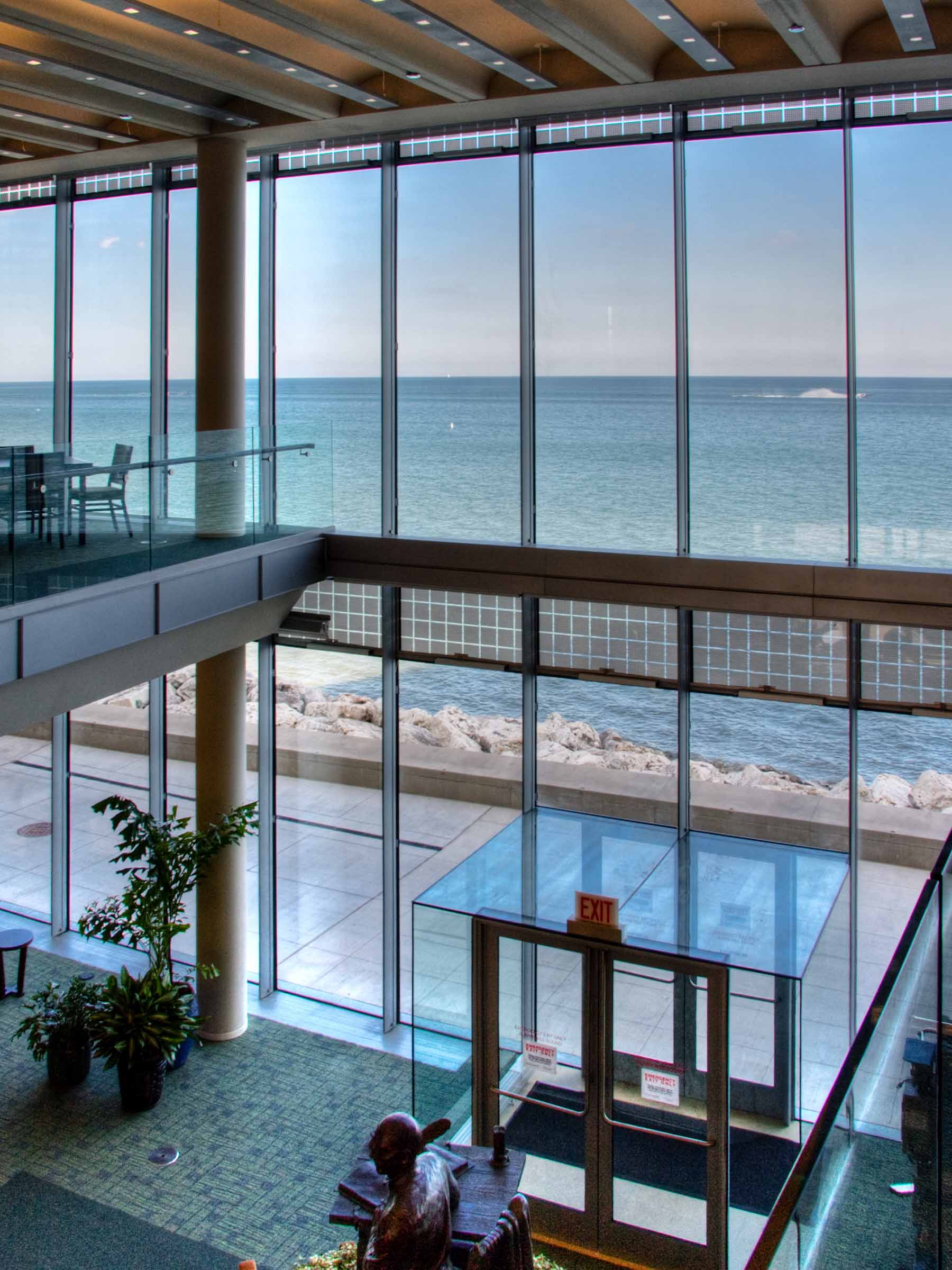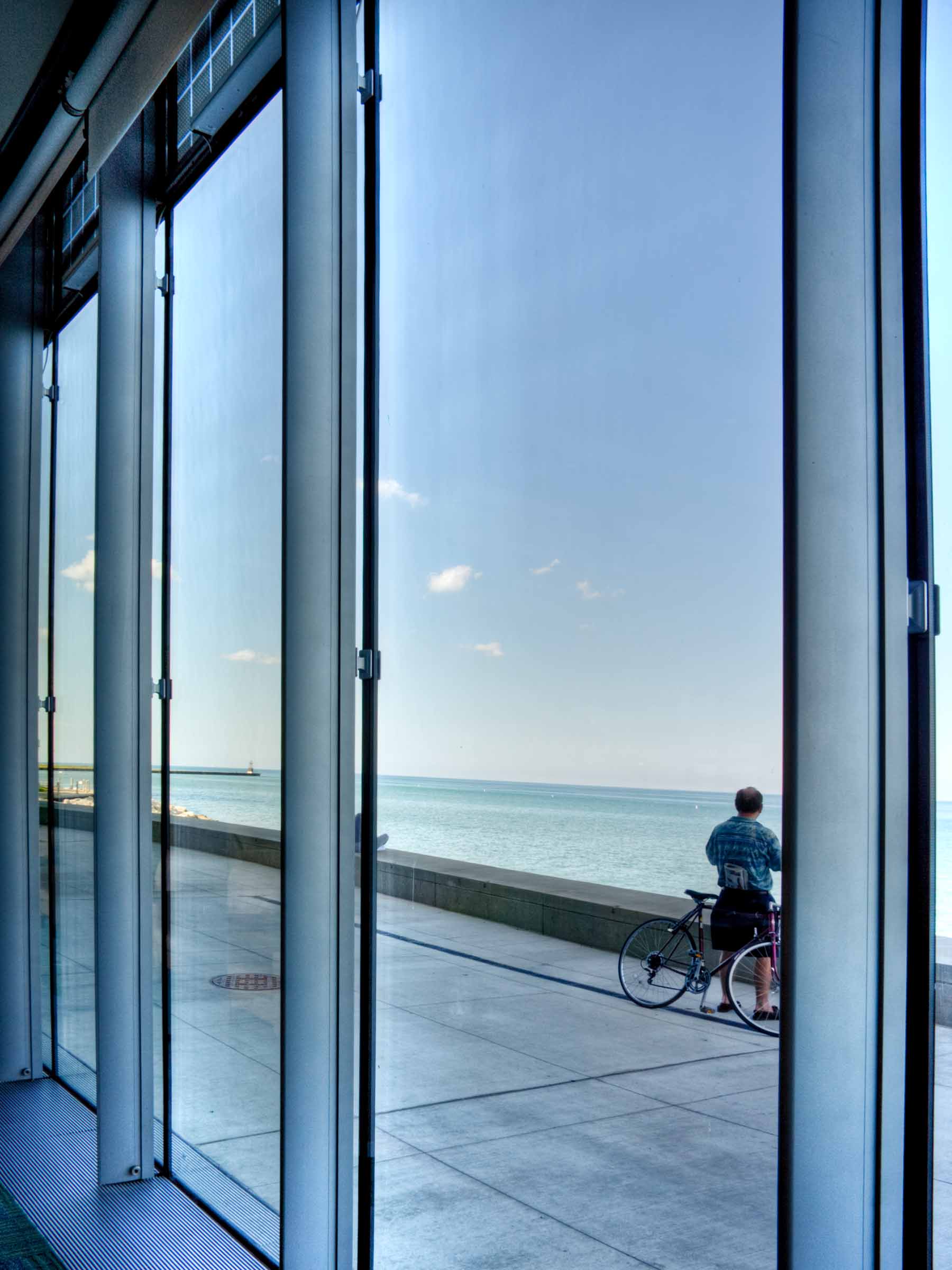Located on Loyola University’s Lake Shore Campus, this 4-story, 72,000 square foot Information Commons was awarded the 2007 Leaf Award for Best Use of Technology at the Fourth Annual Leading European Architects Forum in London, England. The building is LEED Silver certified, largely from its advanced facade systems that create an environment maximizing comfort while reducing energy consumption. The project is designed to use approximately 50 percent less energy than code-compliant buildings.
The commons is essentially a 4-story box incorporating limestone elevations to the south and north, with transparent full-elevation facades to the east and west. Under normal conditions one can stand to the west of the building and see through the library with an unobstructed view of the lake.
A key component of the green design is the advanced facade technology used to achieve the east and west glass walls. The west face uses a double-skin facade to manage heat flow and natural ventilation through the year. The facade features two layers of glass separated by an air space roughly three feet between the inner and outer layer. Air circulates in the cavities between the facades, while 4˝ horizontal blinds inside the outer glass layer track the sun’s movement throughout the day. These blinds reflect away the heat of excess radiant energy when closed, while allowing natural daylight into the building when opened. Transsolar was brought on as a climate consultant to oversee the project.
West Facade: Double-Skin
The primary entrance from the campus’ quad is a 150´ transparent skin. The outer layer of the double-skin (DSF) is a cable net glass wall. 36˝ inward is the inner layer of the dual-skin, a point-fixed system that uses cast fixings to clamp insulated glass panels to vertical extrusions. The DSF provides a sealed cavity between the two layers that is used as an acoustic and thermal buffer between inside and out, and as a source of ventilated air under controlled conditions.
West Facade: Double-Skin
The primary entrance from the campus’ quad is a 150´ transparent skin. The outer layer of the double-skin (DSF) is a cable net glass wall. 36˝ inward is the inner layer of the dual-skin, a point-fixed system that uses cast fixings to clamp insulated glass panels to vertical extrusions. The DSF provides a sealed cavity between the two layers that is used as an acoustic and thermal buffer between inside and out, and as a source of ventilated air under controlled conditions.
Cast Attachments
The inner skin of the west facade as well as the entire east facade utilize a VS-1 point-clamped attachment strategy. This offset creates an air gap between nearly all of the vertical silicone joint and the aluminum mullion. The cast stainless steel clamp retains the insulated glass units, controls their deflection, and transfers forces to the vertical mullion. The elegant, airy effect adds another dimension of transparency to both facades.
Lake Views
The east facade is also a 150´ transparent skin, in this case with a strong visual connection to Lake Michigan. The single skin captures insulated glass units with the VS-1 point-clamp. Additional bands of building-integrated photovoltaics (BIPV) glass exist above the vision zones. These zones also function as operable vents to encourage cross ventilation when the climate permits. The vents work in conjunction with intake dampers at the double-skin to fine-tune airflow in the Commons.
Lake Views
The east facade is also a 150´ transparent skin, in this case with a strong visual connection to Lake Michigan. The single skin captures insulated glass units with the VS-1 point-clamp. Additional bands of building-integrated photovoltaics (BIPV) glass exist above the vision zones. These zones also function as operable vents to encourage cross ventilation when the climate permits. The vents work in conjunction with intake dampers at the double-skin to fine-tune airflow in the Commons.
Enclos is a leader in the United States in double-skin facade technology, having also delivered a box-window double-skin at New Stanford Hospital, a multi-story configuration at Columbia University: Greene Science Center, a multi-story cavity at Comcast Center, and the unitized box-window of Riverhouse.
